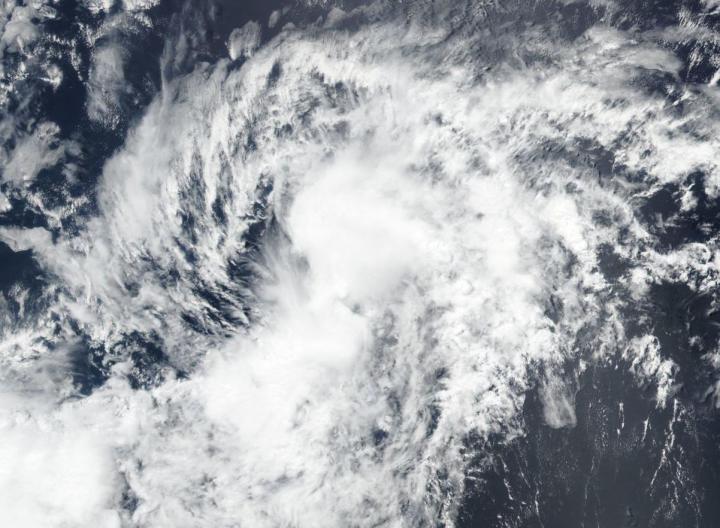
Credit: Credit: NASA Worldview, Earth Observing System Data and Information System (EOSDIS)
NASA-NOAA’s Suomi NPP satellite provided forecasters with visible image of the Eastern Pacific Ocean’s second tropical storm of the season, Boris. Boris formed just east of the Central Pacific Ocean’s boundary as it was moving into that region.
The Central Pacific Ocean Basin is the central area of the North Pacific Ocean. Its boundaries are the Marshall Islands to the west and the Line Islands to the east. Hawaii lies in the Central Pacific Ocean.
Satellites have been monitoring the progress and development of Tropical Depression 3 in the Eastern Pacific for two days. On June 25, the depression organized and strengthened into a tropical storm and was renamed Boris at 5 p.m. EDT. Boris reached maximum strength with maximum sustained winds near 40 mph and weakened back to a depression in 12 hours by 5 a.m. EDT (0900 UTC) on June 26.
Visible imagery from NASA satellites help forecasters understand if a storm is organizing or weakening. The Visible Infrared Imaging Radiometer Suite (VIIRS) instrument aboard Suomi NPP provided a visible image of Boris during its short time as a tropical storm on June 26, 2020.
At 11 a.m. EDT (1500 UTC) on June 26, NOAA’s Central Pacific Hurricane Center noted the center of Tropical Depression Boris was located near latitude 12.0 degrees north and longitude 139.0 degrees west. That is about 1,195 miles (1,920 km) east-southeast of Hilo, Hawaii. The depression was moving toward the west-northwest near 7 mph (11 kph), and this motion should continue through tonight. Maximum sustained winds were near 35 mph (55 kph) with higher gusts.
A turn toward the west is expected late on Friday June 26, or on Saturday June 27. Gradual weakening is forecast during the next couple of days, and Boris is forecast to degenerate to a remnant low pressure area Saturday night or Sunday.
Tropical cyclones/hurricanes are the most powerful weather events on Earth. NASA’s expertise in space and scientific exploration contributes to essential services provided to the American people by other federal agencies, such as hurricane weather forecasting.
###
Media Contact
Rob Gutro
[email protected]
Original Source
https:/




